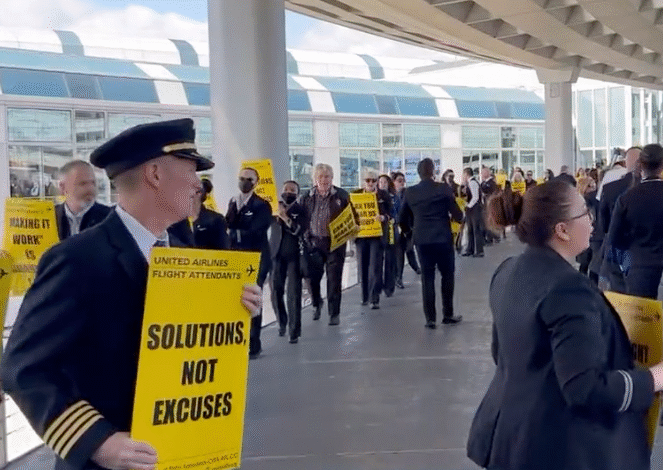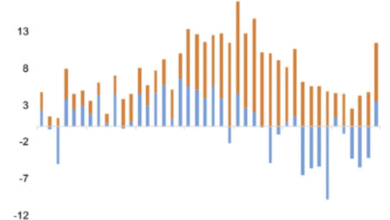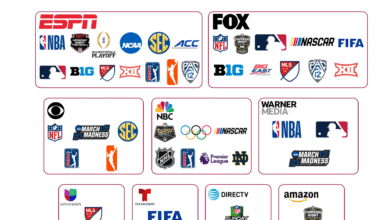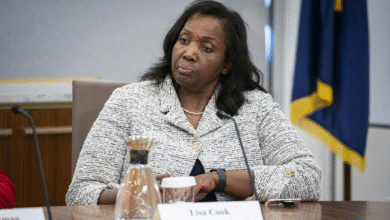United Airlines Labor Agreement: Industry-Leading Terms Announced

The recent United Airlines labor agreement has generated significant buzz in the airline industry, marking a pivotal moment for the airline’s 28,000 flight attendants. With an impressive 40% increase in total economic benefits during its first year, this agreement is being hailed as ‘industry-leading’ by the Association of Flight Attendants-CWA. Flight attendants, who had not received a pay raise since 2020, can look forward to retroactive pay and a signing bonus as part of this new deal. Improvements in scheduling and on-call time further enhance the appeal of the new contract, which is well-timed after recent labor negotiations that prioritized employee welfare across various sectors. As United Airlines maintains its position in the news spotlight, the discourse surrounding flight attendant wages and airline industry agreements is more relevant than ever.
In a notable development within the aviation sector, United Airlines has finalized a labor pact that promises substantial advancements for its cabin crew. This agreement, characterized by a significant increase in economic incentives and enhanced working conditions, showcases the dedication of flight attendants in negotiating for better pay and rights. Given that these employees have not benefited from a wage increase since 2020, the timing of this contract is particularly crucial. As discussions around labor negotiations resonate throughout the airline industry, this tentative contract may set a precedent for future agreements among airline crews nationwide. With United being the last major U.S. airline to conclude its discussions, the implications of this deal could ripple across other airline employee groups seeking similar improvements.
Overview of the United Airlines Labor Agreement
United Airlines has made headlines with its recent announcement regarding a labor agreement targeting its flight attendants. This ‘industry-leading’ agreement has been strategically designed to address the ongoing needs and demands of approximately 28,000 cabin crew members. With a reported 40% boost in total economic benefits during the first year, the agreement marks a significant stride forward, especially since flight attendants have gone without a raise since 2020. This highlights the airline’s recognition of the hard work and dedication provided by the flight attendants, while also acknowledging the shifts in the airline industry post-pandemic.
The union representing the flight attendants, the Association of Flight Attendants-CWA, has indicated that this agreement comes following a period of intense labor negotiations. As last year’s authorization for a strike made clear, there has been substantial pent-up demand for improved wage conditions and benefits among flight attendants. Furthermore, the provision for retroactive pay and a signing bonus underscores the airline’s commitment to rewarding its employees for their service during challenging times.
The Impact of Labor Negotiations on Flight Attendant Wages
The recent labor negotiations leading to the new United Airlines labor agreement are indicative of a broader trend in the airline industry, where employee groups, particularly flight attendants, are asserting their need for better compensation packages. The successful negotiation of this agreement has ignited conversations around flight attendant wages, which have lagged compared to other positions within the airline sector. As United Airlines finalizes terms with its cabin crew, other airlines may feel pressured to adjust their contracts to retain talent and avoid labor disputes.
Despite the substantial increments outlined in the agreement, many flight attendants argue that the adjustments are a necessary but overdue recognition of their contributions to the airlines’ operations. With many employees feeling the squeeze of rising living costs and inflation, the contract serves not only as a financial boost but also as an affirmation of their value within the company. It will be interesting to see how United’s agreements may influence future negotiations across the airline industry.
Quality of Life Improvements in Airline Industry Agreements
In addition to financial perks such as increased wages and bonuses, the United Airlines labor agreement emphasizes improvements in quality of life for flight attendants. Enhanced scheduling practices and changes in on-call time management are crucial elements that reflect the growing priority in labor agreements to not only look at pay but also the overall working conditions. These changes can lead to better work-life balance, which is increasingly demanded by today’s workforce.
As other airlines follow suit, enhancing the quality of life for flight attendants will likely become a common component of successful labor negotiations. This focus could lead to a ripple effect throughout the industry, promoting healthier work environments and setting a new standard for labor agreements. Flight crews that feel supported both financially and in their everyday working conditions are likely to deliver better service, ultimately benefiting the airline’s reputation and operations.
The Role of Unions in Securing Labor Agreements
Unions have played a pivotal role in negotiating labor agreements across various sectors, including the airline industry. The successful negotiation of the United Airlines labor agreement is a testament to the effectiveness of unions like the Association of Flight Attendants-CWA in advocating for their members. Through organized efforts and collective bargaining, unions ensure that the voices of flight attendants are heard, especially in a landscape where such negotiations can lead to significant improvements in wages and overall job satisfaction.
As labor negotiations continue to evolve, the role of unions will likely adapt and grow. They must navigate the complexities of current economic conditions while staying aligned with the interests of their members. This agreement is not just a victory for United Airlines flight attendants, but also reinforces the importance and necessity of union representation in achieving favorable outcomes during challenging negotiations.
The Future of Flight Attendants in the Airline Industry
The signing of this agreement could signal a turning point for flight attendants across the airline industry. With increasing awareness around employee rights and compensation, the success of the United Airlines labor agreement might lead to more aggressive negotiations at other airlines. Flight attendants now have a benchmark that can inspire similar demands, thereby enhancing their bargaining power in future discussions.
As this industry continues to recover and adapt post-pandemic, the landscape for flight attendants is likely to change dramatically. Improved contracts can help in recruiting and retaining qualified personnel, contributing to better overall service quality in the airline sector. This situation sets the stage for ongoing developments in labor negotiations, where the voices of flight attendants will remain a critical factor in shaping the future of work in aviation.
Understanding the Economic Benefits of United Airlines’ Agreement
The economic benefits included in the United Airlines labor agreement are designed to provide substantial financial relief to flight attendants. With a notable 40% increase in total benefits during the first year, this contract allows the crew to experience improved compensation for their work. This is especially significant considering many flight attendants have been advocating for better wages following an extended period without a raise.
The aspect of retroactive pay also underscores the commitment of United Airlines to making amends for past compensation issues. By providing a signing bonus alongside these benefits, United is emphasizing its appreciation for the hard work of its flight attendants, which is expected to foster greater commitment and morale among the staff.
Key Takeaways from the United Airlines Labor Negotiations
The negotiations leading to the United Airlines labor agreement underscore the importance of ongoing dialogue between airline management and flight crews. Key takeaways from this situation include the necessity of addressing employee concerns swiftly and effectively. As demonstrated, the results not only impact flight attendant wages but also reflect the overall health of the airline industry.
As airlines navigate the complexities of labor relations, the lessons learned from the United agreement may serve as a blueprint for other organizations. By prioritizing employee satisfaction through better contracts and working conditions, airlines can ensure a motivated workforce ready to elevate the customer experience.
The Importance of Federal Mediation in Labor Discussions
Federal mediation has emerged as a crucial element in the resolution of labor disputes within the airline industry. In the case of United Airlines, the request for mediation was a strategic move by flight attendants to facilitate productive discussions. This illustrates how federal resources can help bridge gaps between management and employees, especially in industries requiring intricate negotiations.
Mediation can often lead to favorable outcomes for both parties, as it fosters a cooperative environment for discussion. For flight attendants, it can mean avoiding the disruptions of strikes while promoting essential conversations about wages and working conditions. As labor landscapes change, the utilization of federal mediation may increase in frequency, helping to maintain harmony between airlines and their valued staff.
The Influence of Industry Trends on United Airlines’ Labor Agreement
The recent labor agreement reached by United Airlines is deeply influenced by prevailing trends in the airline industry. As more airlines pursue favorable labor contracts, there is a growing expectation for all companies to follow suit, ensuring competitive wages and benefits for their employees. This competitive dynamic not only benefits employees but can also lead to enhanced customer service as satisfied staff provide better experiences on flights.
Moreover, with airline industry agreements literally reshaping the landscape of employee compensation, United’s proactive approach may set a precedent for how other airlines handle negotiations. This could potentially spark a wave of similar agreements in the industry, leading to overall improvement in flight attendant wages and working conditions across various airlines.
Frequently Asked Questions
What are the key features of the United Airlines labor agreement for flight attendants?
The United Airlines labor agreement includes a 40% increase in total economic benefits for flight attendants in the first year, retroactive pay, and a signing bonus. Additionally, it offers improvements in scheduling and on-call time to enhance the quality of life for the crew.
How does the United Airlines flight attendants contract improve wages compared to previous agreements?
The United Airlines flight attendants contract marks the first raise since 2020, providing a significant increase in wages and economic benefits. The agreement reflects a concerted effort to align compensation with industry standards following recent labor negotiations at other airlines.
What led to the United Airlines labor negotiations with flight attendants?
The labor negotiations were prompted by the United flight attendants’ need for a raise and better working conditions, following the industry trend of improved labor agreements. The cabin crew had authorized a strike and sought federal mediation, highlighting the urgency for a satisfactory labor agreement.
Why is the United Airlines labor agreement considered ‘industry-leading’?
The United Airlines labor agreement is considered ‘industry-leading’ due to its substantial economic benefits that surpass those of similar agreements in the airline industry, including a 40% wage increase and comprehensive retroactive pay.
What impact does the United Airlines labor agreement have on the airline industry?
The United Airlines labor agreement may set a precedent for other airlines in the industry, as it addresses long-standing wage issues and enhances working conditions for flight attendants. Other airlines may feel pressure to negotiate similar or better agreements to retain talent and ensure employee satisfaction.
When will the United flight attendants vote on the labor agreement?
The United flight attendants are set to vote on the labor agreement in the coming days. The final contract details will be disclosed following the conclusion of the voting process.
What is the significance of retroactive pay in the United Airlines flight attendants contract?
Retroactive pay in the United Airlines flight attendants contract is significant as it compensates crew members for the duration they have not received a raise since 2020. This measure acknowledges the contributions and commitment of flight attendants during a challenging period for the airline industry.
How does the United Airlines labor agreement compare to other airline industry agreements?
The United Airlines labor agreement is noteworthy as it offers more substantial wage increases and benefits than many recent airline industry agreements, catering to the demands and expectations of flight attendants who seek better pay and working conditions.
| Key Points |
|---|
| United Airlines has reached a tentative labor agreement for its 28,000 flight attendants. |
| The agreement includes a 40% increase in total economic benefits in the first year. |
| Additional benefits include retroactive pay, a signing bonus, and improved quality of life metrics. |
| United flight attendants had not received a raise since 2020 and authorized a strike last year if negotiations failed. |
| The agreement makes United the last major U.S. airline to reach a deal with flight attendants after pandemic-related negotiations. |
| Details of the contract will be finalized in the coming days and are subject to a vote by the flight attendants. |
Summary
The United Airlines labor agreement represents a significant milestone for flight attendants, offering an unprecedented 40% increase in economic benefits and addressing long-standing demands for better compensation and scheduling flexibility. This agreement not only highlights the commitment of United Airlines to its workforce but also reflects broader trends in labor negotiations across the airline industry post-pandemic. As flight attendants await the final vote on this tentative agreement, the impact of such a deal may set a precedent for future labor discussions in the aviation sector.




